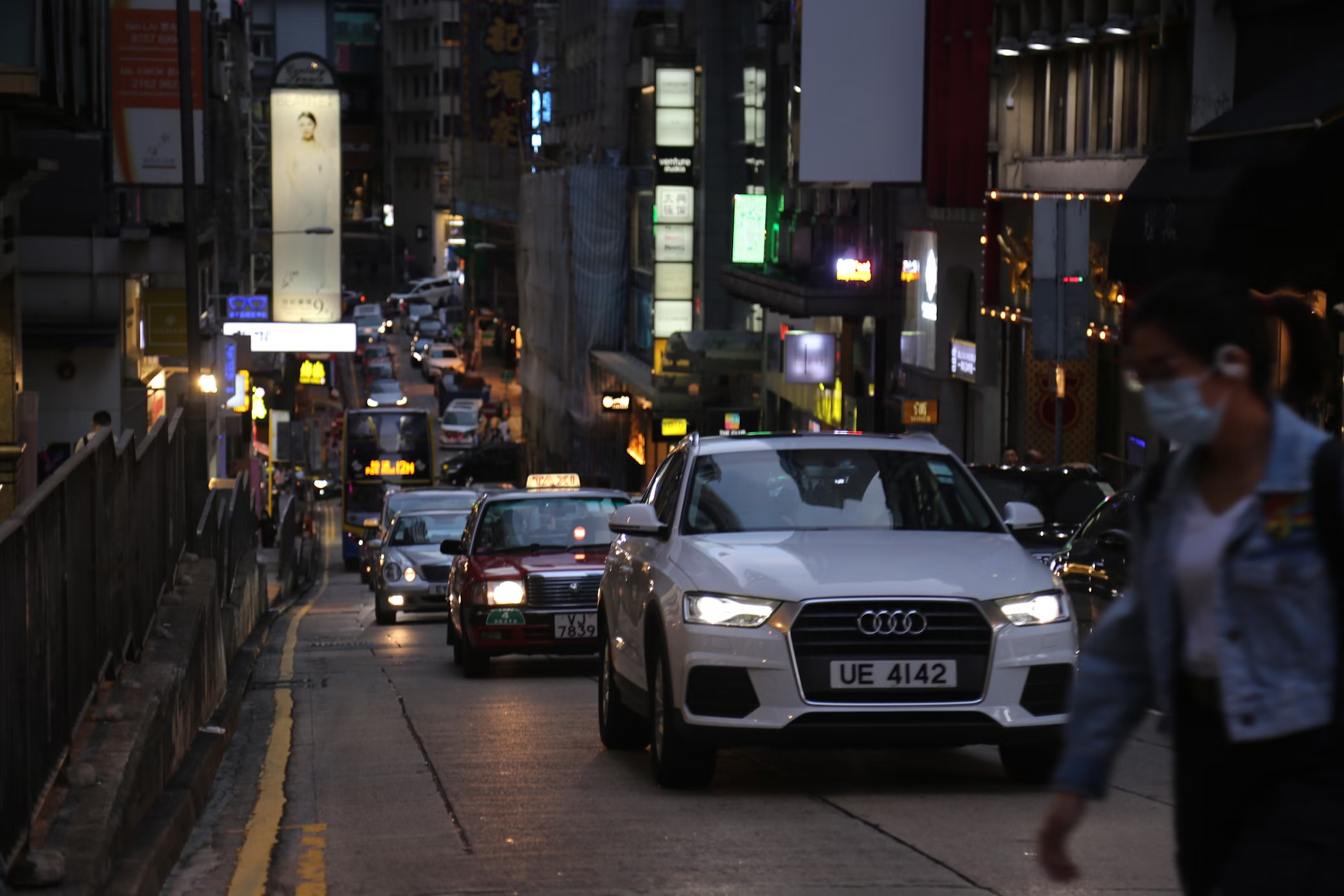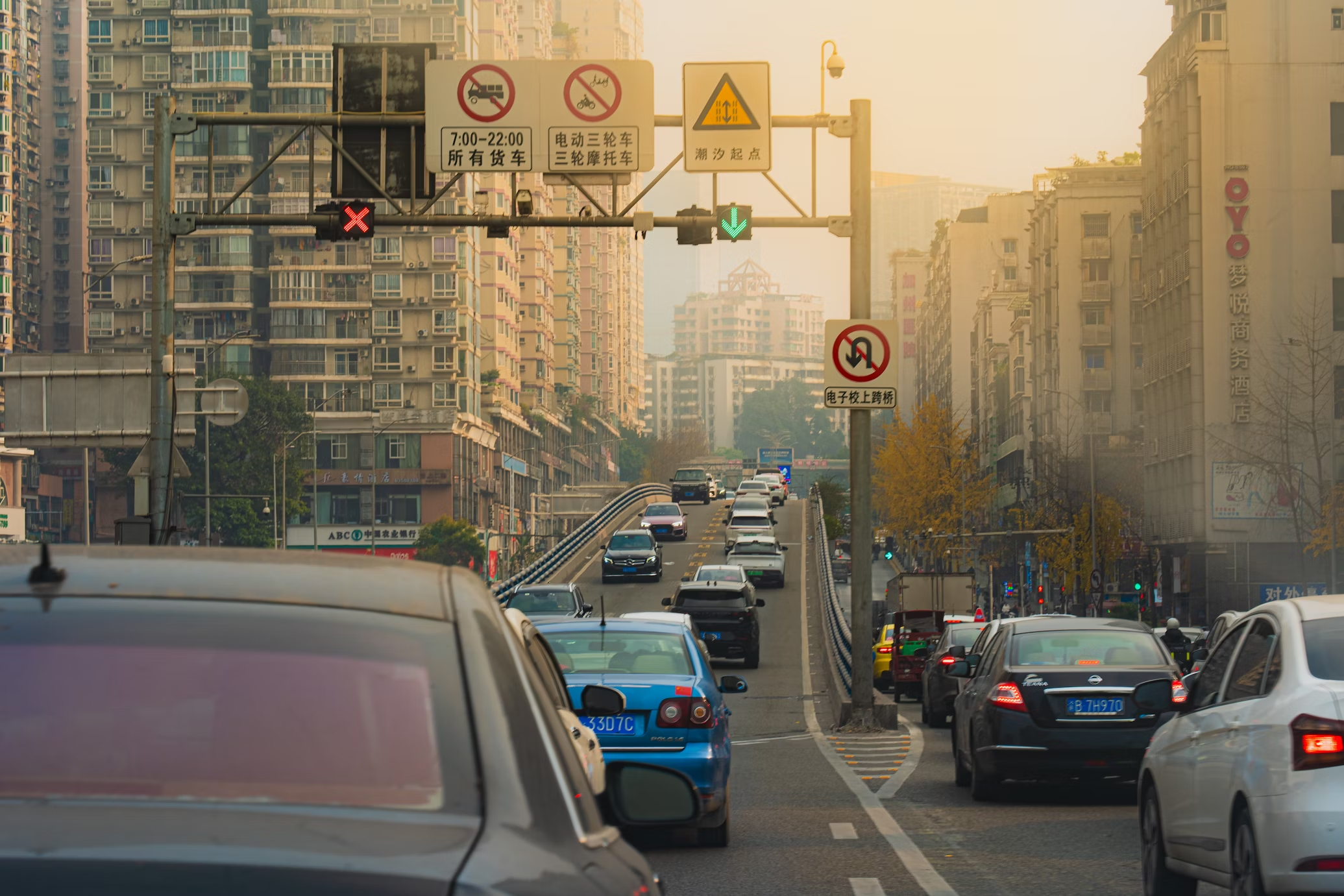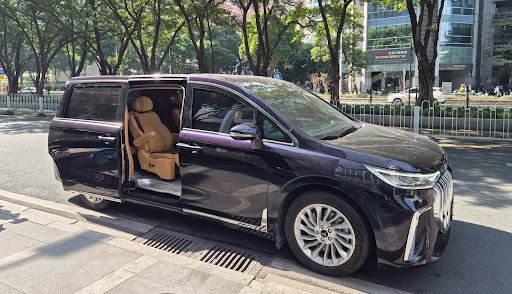Navigating China’s Roads: Essential Tips for International Drivers Renting a Car

For international visitors to China, the prospect of driving in this vast and diverse country can seem daunting. While many travelers opt for chauffeur services or public transportation, some prefer the independence of driving themselves. However, renting and driving a car in China as a foreigner involves specific requirements and considerations that differ significantly from other countries. This comprehensive guide will walk you through everything you need to know about renting a car in China as an international driver, from legal requirements to practical tips for navigating Chinese roads.
Understanding China’s Driver’s License Requirements for Foreigners
One of the most important things to understand before planning to drive in China is that International Driving Permits (IDPs) are not recognized in mainland China. This comes as a surprise to many international visitors who are accustomed to using their IDPs in other countries. Instead, foreigners who wish to drive in China must obtain a temporary Chinese driver’s permit, which is only valid when used alongside your original foreign driver’s license.
The process of obtaining this temporary permit requires several steps and documents, including:
- Your valid passport with appropriate Chinese visa
- Your original driver’s license from your home country
- A notarized Chinese translation of your foreign driver’s license
- Recent passport-sized photos
- Temporary residence registration form (typically provided by your hotel)
- Health declaration form
The application must be submitted in person at the local Vehicle Administration Office in the city where you plan to drive. Processing times can vary from a few hours to several days depending on the location, so it’s advisable to plan this well in advance of your trip. At China Car Rentals, we can provide guidance on this process and help arrange the necessary translation services to make your application smoother.
Choosing the Right Rental Vehicle
Once you’ve secured your temporary driving permit, the next step is selecting an appropriate vehicle. China offers a wide range of rental options, from compact cars ideal for city navigation to spacious SUVs better suited for longer journeys or family travel. When making your selection, consider:
- The nature of your trip (business or leisure)
- The number of passengers
- The amount of luggage you’ll be carrying
- The terrain you’ll be covering (urban areas vs. rural regions)
- Your comfort level with manual vs. automatic transmission
It’s worth noting that automatic transmission vehicles are increasingly common in China but may come at a premium compared to manual options. If you’re primarily driving in congested urban areas like Guangzhou, an automatic transmission can significantly reduce driver fatigue in stop-and-go traffic.
At China Car Rentals, we offer a diverse fleet of well-maintained vehicles to suit various needs and preferences, ensuring you find the perfect match for your journey through China.
Understanding Rental Requirements and Deposits
When renting a car in China, you’ll typically need to provide:
- Your passport
- Your temporary Chinese driving permit
- Your original foreign driver’s license
- A valid credit card for the security deposit
Most rental companies in China require a substantial security deposit, which can range from ¥5,000 to ¥10,000 ($700-$1,400) or more depending on the vehicle type. This deposit is typically blocked on your credit card rather than charged and is released after the vehicle is returned in good condition. It’s essential to have sufficient credit limit available for this purpose.
Additionally, be prepared for a thorough inspection of the vehicle before and after your rental period. Document any existing damage with photographs before driving away to avoid disputes upon return. Most reputable rental companies, including China Car Rentals, will provide a detailed condition report for you to review and sign before taking possession of the vehicle.
Navigating Chinese Roads: Traffic Rules and Etiquette
Driving in China presents unique challenges, particularly for those accustomed to Western driving norms. Here are some key differences and important rules to be aware of:
- China drives on the right side of the road, similar to the United States and continental Europe
- The legal blood alcohol limit is extremely strict at 0.02% (essentially zero tolerance)
- Mobile phone use while driving is strictly prohibited
- Seatbelts are mandatory for all passengers
- Speed limits are typically 30-40 km/h (18-25 mph) in urban areas, 70-80 km/h (43-50 mph) on highways, and 100-120 km/h (62-75 mph) on expressways
- Traffic light signals follow the international standard, but be aware that in some cities, right turns on red are permitted unless specifically prohibited
Perhaps the most significant adjustment for foreign drivers is adapting to local driving styles. Chinese traffic can appear chaotic to newcomers, with seemingly fluid lane discipline and frequent use of horns. However, there is an underlying rhythm and logic to the apparent disorder. Defensive driving is essential – maintain awareness of your surroundings at all times and be prepared for unexpected maneuvers from other road users.

Understanding Road Signs and Navigation
Road signs in major Chinese cities and on highways are typically bilingual, featuring both Chinese characters and English translations. This bilingual approach is particularly common in international hubs like Guangzhou, Beijing, and Shanghai, making navigation more accessible for foreign drivers. However, in rural areas or smaller cities, signs may be exclusively in Chinese, presenting a potential challenge.
To overcome language barriers, it’s highly recommended to use a reliable GPS navigation system. While international services like Google Maps are not accessible in mainland China without a VPN, several excellent alternatives are available:
- Baidu Maps: China’s most popular mapping service, though the interface is primarily in Chinese
- AutoNavi (Gaode): Offers an English interface option and powers Apple Maps in China
- Maps.me: Can be downloaded before your trip and used offline
Many rental vehicles come equipped with built-in navigation systems that support English, but it’s advisable to have a backup option on your smartphone. When renting with China Car Rentals, our vehicles are equipped with modern navigation systems, and we can provide recommendations for the most suitable navigation apps based on your specific needs and language preferences.
Dealing with Toll Roads
China has an extensive network of toll roads, particularly expressways connecting major cities. These toll roads are generally well-maintained and offer the fastest routes between destinations. Tolls are based on distance traveled and vehicle type, with payments typically made in cash or via electronic systems.
Most rental vehicles are equipped with an electronic toll collection (ETC) device, similar to E-ZPass or FasTrak in the United States. This device allows for automatic payment at toll gates, streamlining your journey. The accumulated toll charges are usually added to your final rental bill. If your rental vehicle doesn’t have an ETC device, you’ll need to use the manual lanes and pay in cash (Chinese Yuan).
It’s worth noting that toll costs can add up quickly on long journeys. For example, the approximately 120 km (75 mile) expressway journey from Guangzhou to Shenzhen might cost around ¥50-70 ($7-10) for a standard passenger vehicle. When planning your route, factor these costs into your budget.
Parking Challenges in Chinese Cities
Finding parking in major Chinese cities like Guangzhou can be challenging and sometimes expensive. Urban areas are densely populated, and parking spaces are at a premium. Here are some tips for navigating the parking situation:
- Shopping malls, hotels, and office buildings typically offer underground parking for a fee
- Street parking is limited and often restricted to specific times and durations
- Many cities use a color-coded system for street parking: blue lines indicate paid parking, yellow lines are for loading/unloading only, and red lines prohibit parking
- Parking fees in city centers can range from ¥5-15 ($0.70-$2.10) per hour
- Mobile payment apps like Alipay and WeChat Pay are commonly used for parking payments, which can be challenging for tourists without Chinese payment apps
To avoid parking headaches, consider using public transportation for journeys into congested city centers, or opt for our chauffeur service where our experienced drivers can handle the complexities of urban navigation and parking while you focus on your business or sightseeing.
Handling Emergency Situations
Despite careful planning, emergencies can occur. Here’s what to do in various situations:
Traffic Accidents: If involved in an accident, remain at the scene and call the police (dial 122 for traffic police). Exchange information with other parties involved and take photographs of the damage and scene. Contact your rental company immediately, as they will guide you through the necessary procedures.
Vehicle Breakdown: In case of mechanical issues, most rental companies provide 24/7 roadside assistance. The contact information should be in your rental agreement. If you’re in a remote area with limited phone service, display warning triangles (standard equipment in Chinese rental cars) and seek help from passing motorists if necessary.
Police Interactions: If stopped by police, remain courteous and present your documents when requested. Police officers in tourist areas often speak basic English, but having a translation app can be helpful. Traffic violations can result in on-the-spot fines, which must be paid in cash.
Important emergency numbers in China:
- General Emergency: 110
- Traffic Police: 122
- Ambulance: 120
- Fire: 119
At China Car Rentals, all our vehicles undergo regular maintenance to minimize the risk of breakdowns, and our customer support team is available 24/7 to assist with any emergencies that may arise during your rental period.
Fuel Considerations
Gasoline (petrol) stations are plentiful in urban areas and along major highways in China. Most stations are operated by state-owned companies such as Sinopec, PetroChina, and CNOOC. The most common fuel grades are:
- 92 octane (regular)
- 95 octane (premium)
- 98 octane (super premium)
Diesel is also available but less common for passenger vehicles. Most rental cars in China run on 92 or 95 octane gasoline. Check with your rental provider about the recommended fuel type for your specific vehicle.
Unlike in some countries, self-service is not common at Chinese gas stations. Attendants will fill your tank, and you pay them directly. Major credit cards are accepted at most stations in urban areas, but it’s advisable to carry cash, especially in rural regions. Current fuel prices in China are regulated by the government and are relatively stable, typically ranging from ¥7-9 ($1-1.30) per liter.
Most rental agreements require you to return the vehicle with the same amount of fuel as when you received it, usually a full tank. Keep your fuel receipts as proof of refueling.
Alternative: Chauffeur Services
While this guide focuses on self-driving in China, it’s worth considering whether driving yourself is the best option for your specific needs. For many visitors, especially those on business trips or short vacations, hiring a car with a professional driver offers significant advantages:
- No need to obtain a temporary Chinese driving permit
- Elimination of language barriers when navigating or interacting with locals
- Local drivers’ familiarity with optimal routes and traffic patterns
- Freedom to work, relax, or sightsee while in transit
- No concerns about parking or interpreting road signs
China Car Rentals offers premium chauffeur services with professional, English-speaking drivers who can enhance your experience in Guangzhou and beyond. Our chauffeur service includes airport pickups, hotel transfers, business meeting transportation, and customized sightseeing itineraries.
Planning Your Route
Effective route planning is essential for a smooth driving experience in China. The country’s road network is extensive and generally well-developed, particularly in eastern and southern regions. Major cities are connected by modern expressways that rival those found in Europe and North America.
When planning longer journeys, consider these factors:
- Traffic conditions: Major cities experience significant congestion during rush hours (typically 7:30-9:30 AM and 5:00-7:00 PM)
- Rest areas: Expressways feature service areas every 50-100 km, offering restrooms, restaurants, and fuel stations
- Construction: Road construction is common as China continues to expand its infrastructure; check for recent updates before traveling
- Weather conditions: Seasonal factors like monsoon rains in summer or snow in northern regions during winter can affect travel times
For intercity travel, expressways (高速公路, gāosù gōnglù) offer the fastest routes but incur tolls. National highways (国道, guódào) are toll-free alternatives but may have lower speed limits and pass through towns and villages, increasing travel time.
When driving in unfamiliar areas, allow extra time for unexpected delays and plan your refueling stops strategically, especially for journeys through less developed regions where service stations may be farther apart.
Cultural Considerations on the Road
Understanding local driving culture can significantly enhance your experience on Chinese roads. Here are some cultural nuances to be aware of:
- Horn usage: In China, horns are used much more frequently than in many Western countries. Rather than expressing anger, a quick horn tap is often used as a courteous way to alert other drivers to your presence.
- Yielding expectations: The concept of yielding to other vehicles or pedestrians can differ from Western norms. Generally, larger vehicles expect smaller ones to give way, regardless of official right-of-way rules.
- Pedestrian interactions: While pedestrians technically have right-of-way at crosswalks, in practice, vehicles often proceed with caution rather than coming to a complete stop. Be vigilant for pedestrians who may cross roads at unexpected locations.
- Personal space: The definition of safe following distance tends to be shorter in China than in many Western countries. Don’t be alarmed if other vehicles drive closer to you than you might be accustomed to.
Adapting to these cultural differences requires patience and flexibility. Maintain a defensive driving approach, stay calm in challenging situations, and observe how locals navigate complex traffic scenarios. With time, you’ll develop a better understanding of the unwritten rules that govern Chinese roads.
Conclusion
Driving in China as an international visitor presents unique challenges but can offer unparalleled freedom to explore this diverse and fascinating country at your own pace. From navigating the legal requirements of obtaining a temporary Chinese driving permit to understanding local road customs, proper preparation is key to a successful self-driving experience.
For those who prefer not to navigate the complexities of driving in China themselves, China Car Rentals offers comprehensive chauffeur services that provide all the convenience of private transportation without the stress of driving in an unfamiliar environment. Our professional, English-speaking drivers combine local knowledge with exceptional service to ensure your journey through Guangzhou and beyond is comfortable, efficient, and enjoyable.
Whether you choose to take the wheel yourself or relax in the passenger seat, proper planning and realistic expectations will help ensure your transportation experience in China enhances your overall visit to this dynamic country.
For more information about our self-drive rental options or chauffeur services, contact China Car Rentals today. Our team is ready to assist with all your transportation needs in Guangzhou and throughout China.







